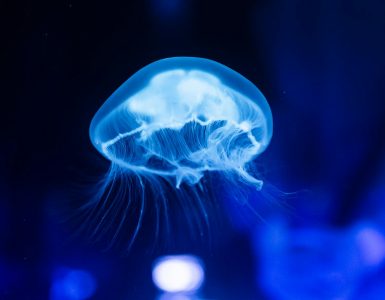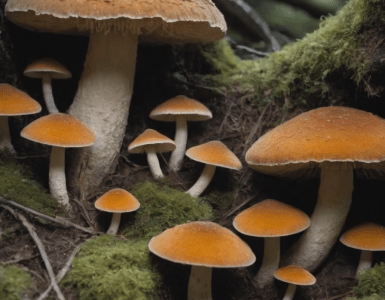We think we know nature. We’ve got documentaries, nature walks, and even that really cool David Attenborough voice narrating our understanding of the planet. But beneath the surface of what seems familiar, a whole world of astonishing anomalies lurks, ready to challenge our preconceived notions. Get ready to have your mind delightfully blown – because nature is far weirder and more wonderful than you ever imagined.
Trees That Talk? It’s Not Just a Metaphor
Forget whispering secrets in the forest; trees are actually engaging in complex, underground conversations! A vast network of mycorrhizal fungi – essentially, underground fungal threads – connects the root systems of trees. Through this network, they share resources like water and nutrients, but also crucial information. Facing a threat? A tree can send warning signals to its neighbors via this fungal internet, prompting them to ramp up their defenses. Who knew trees were such excellent communicators? This amazing discovery completely upends our understanding of forest ecosystems, highlighting a level of cooperation and communication we never suspected.
Vampire Plants, Anyone?
We all know plants need sunlight to survive (or so we thought). But some plants are total rebels, ditching the photosynthesis party for a more… sinister approach. These parasitic plants, like the infamous Rafflesia arnoldii (the world’s largest flower), completely bypass the need for sunlight. Instead, they tap into the root systems of other plants, sucking out their lifeblood! Think of it as nature’s version of a vampire – except instead of blood, they steal nutrients. These plants challenge our basic understanding of plant life, demonstrating the incredible diversity of survival strategies in the natural world. And that huge flower? It smells like rotting flesh.
The Amazing, Shape-Shifting Octopus
Octopuses are known for their intelligence, but their adaptability goes far beyond opening jars. Meet the mimic octopus, a master of disguise that can seamlessly transform its body shape, texture, and even color to mimic other marine creatures like sea snakes or lionfish. This isn’t just camouflage; it’s full-on impersonation. These crafty cephalopods use this skill to evade predators and even lure prey. It’s like a real-life superhero with incredible shape-shifting abilities, challenging our assumptions about what’s possible in the animal kingdom.
Das schockierende Geheimnis des Zitteraals
Electric eels aren’t eels at all (they’re actually knifefishes)! And their electric powers aren’t just for defense. Sure, they can deliver a powerful jolt that can knock a horse off its feet, but the electrifying truth is that they use their electric organs for a whole range of sophisticated tasks—including hunting, navigation, and even communication. They create an electric field around them and sense disruptions in this field, allowing them to locate prey hidden in murky water or even communicate with other eels. It’s like having a built-in sonar and communication system all in one shocking package.
Die biolumineszenten Wunder der Tiefsee
What’s lurking in the deepest, darkest corners of the ocean? A dazzling display of bioluminescence! Many deep-sea creatures create their own light using chemical reactions, a phenomenon that completely changes the landscape of this seemingly barren environment. Bioluminescent displays are used for everything from attracting mates to luring prey to confusing predators—a stunning example of how life adapts to even the most extreme conditions. The diversity of bioluminescent organisms is mind-blowing, hinting at an underwater world exploding with light and color far beyond our current understanding.
The Marvel of the Mangrove Forest
Mangrove forests are often overlooked, even though they’re one of the most important ecosystems on the planet. These salt-tolerant trees thrive in coastal areas, creating incredibly diverse and productive habitats. These incredible ecosystems act as natural buffers against storms, protect coastlines from erosion, and support a vast array of marine life – acting as nurseries for countless fish and shellfish species. Beyond that, they are also vital carbon sinks, trapping massive amounts of carbon dioxide from the atmosphere and helping combat climate change. Yet, despite their crucial role, mangrove forests are being destroyed at an alarming rate, highlighting the urgent need for conservation efforts.
Beyond the Basics: The Endless Wonders of Nature
These are just a few examples of nature’s astonishing anomalies—the things that challenge our assumptions and expand our understanding of the natural world. From communicating trees to shape-shifting octopuses and bioluminescent deep-sea creatures, the planet is brimming with surprising adaptations, intricate relationships, and breathtaking wonders. Exploring these anomalies not only helps us appreciate the diversity of life but also emphasizes the importance of conservation and understanding the complex web of life that makes our planet so unique.
So next time you’re out in nature, remember that what you see on the surface is just the tip of the iceberg. There’s a whole world of astonishing anomalies waiting to be discovered, challenging what we think we know about the natural world and reminding us of its endless capacity to surprise and amaze.

























Kommentar hinzufügen